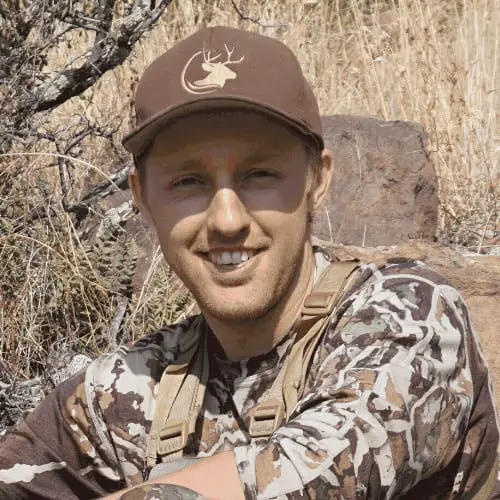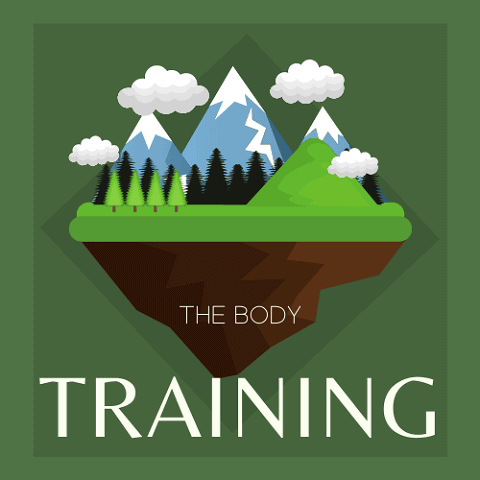Fact checked by Steven Lines, lifelong Hunter, and Outdoorsman .
.
Elk are unique animals that have some very interesting habits. Many hunters wonder if they share some of the same characteristics that their local deer herds share, such as making rubs. So do elk make rubs?
Elk love to make rubs in trees and will do so year-round. They prefer to make rubs more often than scrapes on the ground. Elk make rubs in order to mark their territories, disperse their scent, and polish their antlers.
Searching for and finding elk rubs in an area is a great indicator of a local elk herd that is most likely nearby. They can be a great resource for hunters searching for elk. Continue reading to learn more about elk rubs and how to take full advantage of them on your next elk hunt.

In this post, we'll cover:
Why Do Elk Make Rubs?
Elk make rubs for a variety of reasons. One of the main reasons is to mark their territories and help disperse their scent in an area. This is why elk will continue to make rubs for most of the year when they have hard antlers on their heads.
Elk, unlike deer, also do not use scrapes in the same manner. Elk do make scrapes, but they do not continue to check on them or freshen them up like a deer would do. In order to best mark their territories and get their scent out there, they will tear up and rub their antlers and faces on a tree.
The scent glands near their eyes help to put plenty of scent on the tree, while their antlers tear it up and give a visual warning to other elk in the area.
Do Elk Rub Trees to Shed Antlers?
In addition to marking their territory and spreading their scent, many people speculate that elk may rub trees in order to shed their antlers. Unfortunately, there is no solid evidence that this is the case. When elk are ready to shed their antlers, their heads are very tender.
They will avoid rubbing their antlers that are about to fall off on anything. This means that during this time, and while their antlers are growing, they will not be making any rubs on nearby trees. This theory is further backed by the fact that sheds are very rarely found near rubs, especially at the base of them like you would expect if an elk was rubbing the tree and they fell off.
Do Elk Rub Trees in Order to Strip Velvet?
Another possible reason why elk rub trees is to strip the velvet off of their antlers as they are done growing. But unlike the theory that elk rub in order to shed antlers, this one has some solid evidence to support it.
Many hunters have come across various rubs with strips of velvet hanging off of them. Elk will rub a tree to get the velvet to come off of the antlers and to polish up their antlers before using them to fight other elk during the breeding season.
There are even videos that you can find of bull elk stripping their velvet by rubbing and raking their antlers against a small tree. Not only does this make a rub and mark their territory, but it helps them get rid of the velvet at the same time.
How Do You Tell the Difference Between Deer and Elk Rubs?
Both deer and elk make rubs for the same reasons. So how do you tell the difference between a deer and elk rub when both species live in the same area? The biggest key indicator that will tell you if you are looking at a deer or an elk rub is the size of the rub itself.
Elk are big animals. They stand much taller than a deer, and their antlers can reach giant heights. Elk rubs will tend to reflect this and will be much bigger than a deer rub. Elk rubs can reach heights of up to 12 feet on a tree. Deer rubs, on the other hand, are much smaller.
Your average deer rub will tend to be only a few feet off of the ground, while an elk rub can be 5 to 6 feet off of the ground on the tree. Elk will also target bigger and thicker trees in order to make their rubs. They do not want to rub a tree that they can easily break in half.
Deer will rub on trees and shrubs that are much smaller in height. Their rubs will also be less likely to break off branches or rub off the entire bark. Elk will completely destroy trees, breaking off branches in the process.
Why Are Rubs Important to Elk Hunting?
Elk make the most amount of rubs during the breeding season. This is also when the most amount of hunters are out in the woods. If you are hunting elk and are seeing plenty of fresh elk rubs, then you know that you are in a very high-quality elk hunting area.
A bull elk can make several rubs in a single day to best disperse his scent and mark the territory.
The fresher the rubs you see, the closer you are to the elk. When hunting, look for fresh rubs in the area. A fresh rub is easily distinguishable from an old one by looking at the amount of tree sap coming out of the tree and the broken branches and bark.
Older rubs will tend to be dried up and even have the tree branches be dead. On the other hand, a fresh rub will still have the tree green and even the ground beneath it torn up.
Final Thoughts
Elk rubs are a great sign if you are actively hunting for elk. Not only do they communicate to other elk that they are in the area, but they can communicate the same thing to you. By finding and hunting around areas with rubs, you will increase your odds of success.

Steven Lines is a hunter and outdoorsman from Safford, Arizona, USA. Since he was a child, he has been hunting and fishing and has over 20 years of outdoor experience. Steven works as a hunting guide in Arizona during his spare time and runs a Youtube channel dedicated to sharing his outdoor adventures with others.
dedicated to sharing his outdoor adventures with others.
Sources
- https://forums.bowsite.com/tf/bgforums/thread.cfm?forum=5&threadid=379780

- https://www.elk-hunting-tips.net/elk-sign.html

- https://wapititalk.com/Hunting/viewtopic.php?f=3&t=1361


